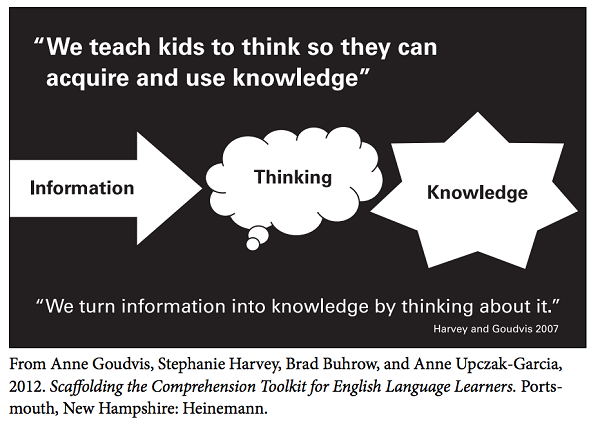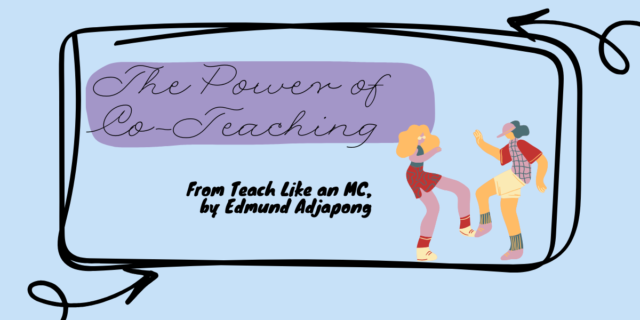
“Reading and writing are not ends in themselves. They truly are a means to an end, so students can acquire and actively use knowledge to build understanding and gain insight.”
—Stephanie Harvey and Anne Goudvis
We don’t save teaching comprehension just for the literacy block. We teach comprehension strategies across the curriculum so kids can learn, understand, and remember the content. In fact, content literacy is about laying down a foundation of thinking strategies and then merging the content with them in science, social studies, and any other subject areas. The amount of information we are bombarded with every day requires that we have strategies to reason through it to decide what’s worth learning and remembering.
We live in the information age, but we are not sure that kids understand the difference between information and knowledge. If we don’t think about information, it is merely information in, information out—or garbage in, garbage out. However, if we do think about it, we have good shot at turning information into knowledge. And no one can do the thinking for us; we have to construct meaning ourselves.
Art Costa reminds us that we can’t teach kids to think because humans are born thinking (Costa 2008). But to prepare them for living in the twenty-first century, we can and must teach them to
- Be aware of their thinking
- Think strategically
- Recognize the power of their own thinking

We’d like to see this graphic shared with kids in classrooms around the world because it sends the message that the power of learning and understanding resides between their ears. Kids need to do the thinking, but it is our responsibility to share a repertoire of strategies that promote learning, understanding, and remembering.
Almost twenty years ago, researchers identified a collection of strategies that proficient readers use to construct meaning when they read, listen, and view (Pearson et al 1997). Much of our work, including the lessons and practices in The Comprehension Toolkit series as well as our book, Content Literacy: Lessons and Texts for Teaching Comprehension Across the Curriculum, are grounded in and built on this body of research. We believe readers need to
- Monitor comprehension
- Activate and connect to background knowledge
- Ask questions
- Infer and visualize meaning
- Determine importance
- Summarize and synthesize
Once students have had explicit instruction in these thinking strategies and have learned how to use them independently and flexibly, we engage them in lessons that rely on a repertoire of strategies for understanding. For instance, we’ve noticed when asking questions, we immediately attempt to infer an answer. When synthesizing information, we rely on myriad strategies to come up with the big picture. In classrooms that foster a strategic spirit, reading, writing, and thinking occur in an environment rich with text talk, discussion, debate, and purposeful collaboration. Reading and writing are not ends in themselves. They truly are a means to an end, so students can acquire and actively use knowledge to build understanding and gain insight.
Our book, Content Literacy: Lessons and Texts for Comprehension Across the Curriculum, provides content literacy lessons designed to teach students ways to get the most out of their nonfiction reading so they can build content knowledge and actively use it. The lessons engage students in analysis, synthesis, critical reading, and thinking across the curriculum. They are not defined by strategy, but instead integrate several comprehension strategies which build on the original lessons in The Comprehension Toolkit.
Click here to receive updates on Content Literacy: Lessons and Texts for Teaching Comprehension Across the Curriculum as well as the second edition of The Comprehension Toolkit.
♦ ♦ ♦ ♦
Anne Goudvis and Stephanie Harvey have enjoyed a fifteen-year collaboration in education as authors and staff developers. They are coauthors of Heinemann’s curricular resource series The Comprehension Toolkit.


